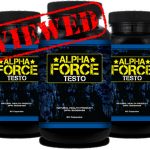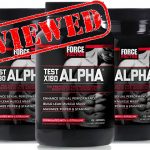
Testosterone is known as the “king of hormones” mainly due to its relation to increasing muscle mass, deepening the voice and helping make men, well, men.
Too little of it and the body starts to take on more feminine characteristics such as fat deposits on the lower stomach, hips and thighs while muscle mass reduces leading to more slender arms and legs.
It is also the main hormone responsible for keeping the sex drive high and when it reduces, so does your libido.
So can testosterone really help you build muscle? And how does it actually work? Read on to discover all you need to know.
Optimal Hormone Levels Help Increase Muscle Mass
Testosterone can range from anywhere between 300 – 1,200 ng/dL in a healthy adult male.
When your Testosterone levels fall below 300 ng.dL then you will be classified as having hypogonadism which is the clinical term for low T-levels and you will find it hard to build muscle mass.
As testosterone is a steroidal hormone, it helps with the synthesising of protein which helps feed the muscles to help increase them in size and strength.
Without protein synthesis, the muscles cannot grow properly after a workout. Of course, building muscle is more than just testosterone, you need adequate calories, protein and carbs to be able to build solid and strong muscles.
If you find that building muscle is a slow and almost impossible process, then you first need to look at what you are eating, how you are exercising and possibly have your testosterone levels checked at your GPs Surgery.
A simple test can determine your levels and your GP can help walk you through the many different ways of increasing your testosterone safely.
So Testosterone Can Help Build Muscle Mass?
Research has shown that if you are below the normal ranges then you will have a much harder time building muscle.
If you maintain standard levels, then muscle building becomes easier, and if you are at the upper end or above, then your muscle building potential goes up even more.

To increase your testosterone levels, you need to make a few lifestyle changes which will have more of it flowing through your veins. These are as follows:
Reduce your stress levels: Stress can impair your testosterone levels. The more stress you have, the lower your levels will be. Discover ways to get rid of your stress to help increase your testosterone.
Eat a balanced diet WITH fat: Low levels of dietary fats such as monounsaturated and saturated fats directly correlates with lower testosterone levels. Protein and carbs count, but they are useless without fats.[1]
Sleep more: Sleep deprivation leads to fat gain, reduced energy expenditure and lower testosterone levels. Aim for 8 solid hours of sleep for better testosterone production.
Strength training: Cardio is great for fat loss and heart health, but you need to train with weights to build muscle and increase testosterone levels.
Reduce body fat: The higher your body fat is, the lower your testosterone will be. You want to aim for higher amounts of lean muscle to burn more body fat and help produce more testosterone.
How Can Testosterone Help Increase Muscle Mass?

Testosterone is an androgen which is basically what helps develop male traits such as larger muscles, increased penis length during puberty, body hair and higher levels of aggression.
In teenagers, this is what creates the mood swings and deepening of the voice.
In adulthood, androgens are what regulate muscle growth, sex drive and mood, but androgens alone cannot build muscle mass.
For muscle growth to happen the body needs to perform resistance training which leads to micro tears of the muscle fibres. The body then performs protein synthesis to rebuild the protein strands in the muscle to be longer and stronger. Without testosterone, protein synthesis cannot take place.
Testosterone bonds to the muscle fibres and amplifies the biochemical signals it sends out which leads to the protein synthesis and muscle growth.
It also plays a role in increasing the levels of growth hormone which also lends itself to developing muscle. Growth hormone is released during intense exercise and like testosterone, helps with protein synthesis.
By increasing skeletal muscle protein synthesis, the body can adapt the muscles to exercise and help increase them in strength, size and endurance. It also helps the body recover faster from exercise making the recovery period shorter.
So More Testosterone Means More Muscle Mass?

A study published in the American Journal of Physiology-Endocrinology and Metabolism, showed that the metabolic effects of testosterone are dose-dependent.[2]
In more basic terms, the higher the serum levels of testosterone are in the body, the higher the amount of lean muscle mass you will have. However, it’s important to know that excessive consumption of steroids may have serious consequences in terms of cardiovascular functioning and endocrine balance.
Researchers at Maastricht University reviewed literature relating to anabolic steroids and discovered that the muscle gains in people who performed resistance training while using anabolic steroids ranged between 4.5 to 11 pounds (2-5kg) over the short term.[3]
The largest amount of muscle growth discovered was 15.5 pounds, which was from just over 6 weeks of weightlifting while taking steroids.
While the studies relate to steroid usage, using steroids is a dangerous way to build muscle. Testosterone can easily be boosted to above normal levels with the use of diet, exercise and supplements and without the need of daily injections of potentially lethal doses of steroids.
The Best Way to Build Muscle
When losing weight you need to burn more calories than you consume.
This usually involves reducing calorific intake by around 500 Kcals and increasing aerobic and strength training exercises. To build muscle you need to feed your body.

Feeding the muscles plays an important role in increasing their size and eating a nutritionally balanced diet of protein, complex carbohydrates and fats can help build mass fast. When building muscle you need to consume more calories than you expend so that more of the protein can be laid down as pure muscle.

Strength training should also be performed when on a calorie deficit day if you are also trying to reduce body fat. This is so the muscles are kept lean while the body utilises body fat for fuel.
Reducing calories too much will lead to the body metabolising muscle tissue along with body fat resulting in lower muscle mass and a lower metabolism.
Eating foods rich in heart healthy fatty acids will help increase your testosterone levels, which when combined with optimal nutrition and diet will result in an explosion of muscle growth.
If you find it hard to build muscle mass then chances are your testosterone levels are too low and you need to find a way to naturally boost it.
Avoid injecting steroids into your body as these are not only dangerous with many serious side effects, but in a way, cheating.
Your body provides you with the perfect ways to increase your testosterone and muscle building capabilities, and by taking advantage of various supplements you can expect the same results without the risks.
So what is the Bottom Line?
 While testosterone plays an important role in muscle building, it is only one of many different factors that contribute to muscle growth.
While testosterone plays an important role in muscle building, it is only one of many different factors that contribute to muscle growth.
Insulin, insulin-like growth factor 1, hepatocyte growth factor, fibroblast growth factor and growth hormone all work together to build muscle.
Besides hormones, good sleep, excellent and balanced nutrition, reduced stress levels and plenty of exercise all contribute to developing strong, lean and larger muscles.
Avoid injecting steroids and stick to safer, more natural methods of boosting your testosterone and muscle mass.
Find out for yourself the top 5 natural T-boosters currently available on the market right now.
These are the best choices if you want to...
- Build Muscle Quickly
- Rapid Strength & Size Increases
- Promote Fat Loss
- Increase Energy
- Enhance Sex Drive
Click Here to See the Full List!
References
[1] https://www.ncbi.nlm.nih.gov/pubmed/23472458
[2] Sattler, F., Bhasin, S., He, J., Chou, C. P., Castaneda-Sceppa, C., Yarasheski, K., … & Azen, S. (2011). Testosterone threshold levels and lean tissue mass targets needed to enhance skeletal muscle strength and function: the HORMA trial. The Journals of Gerontology Series A: Biological Sciences and Medical Sciences, 66(1), 122-129.
[3] http://www.ncbi.nlm.nih.gov/pubmed/15248788









Leave a Reply